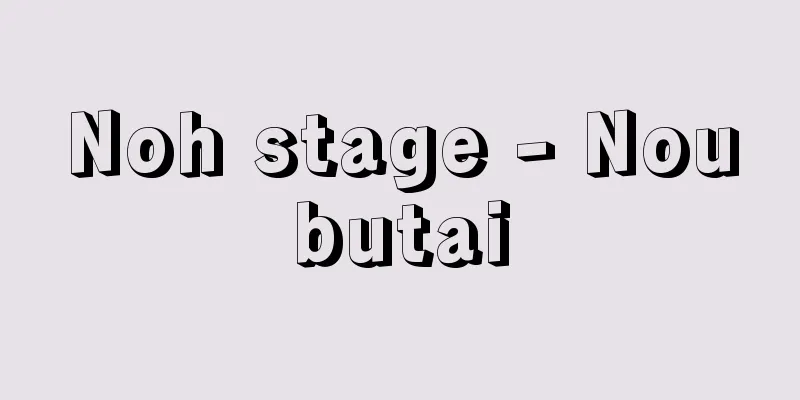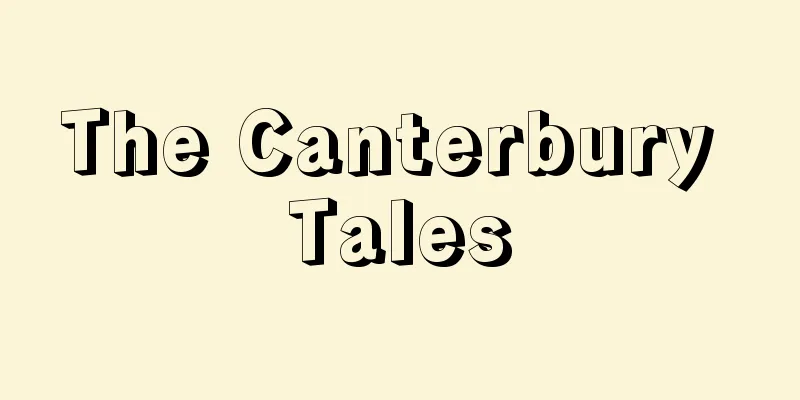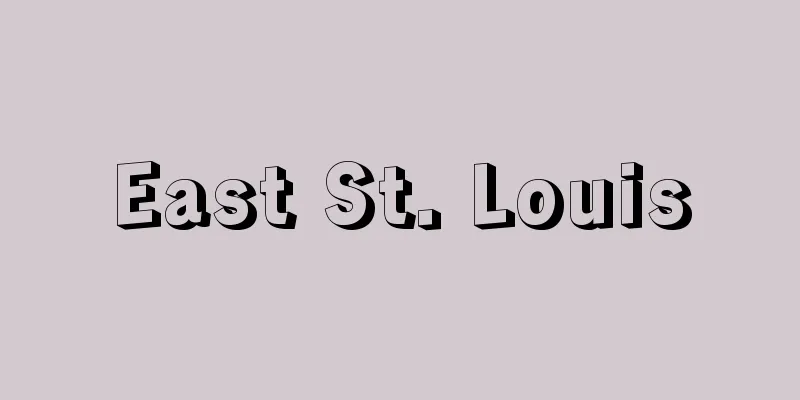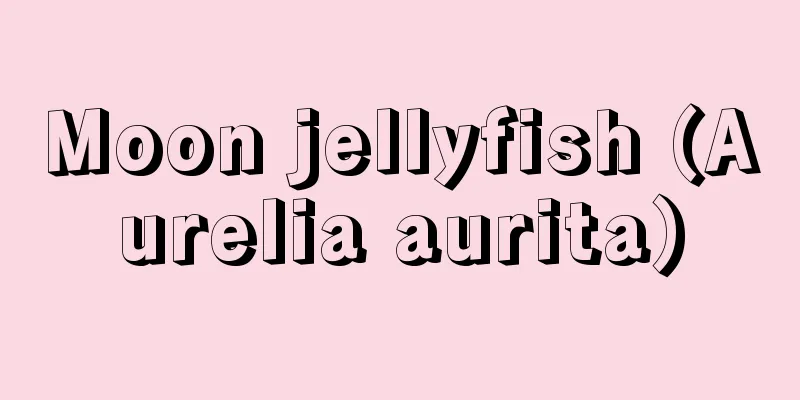Banned - Hakkin

|
This is the abbreviation for the so-called sale and distribution prohibition, which is a disposition by public authority that prohibits the sale and distribution (free distribution) of a specific issue or book of a publication, such as a newspaper, magazine, or book. Of these, there is a separate disposition to prohibit publication (prohibiting the existence of the periodical in question) for periodicals such as newspapers and magazines, but when it is abbreviated to "banning," it usually refers to the former. Banning does not exist in Japan today, and the only similar thing is the seizure of illegal obscene publications, but it is famous as a method of government control of speech that was rampant under the old regime before World War II. This ban is a so-called administrative disposition that the Minister of Home Affairs can take at his discretion if he judges that newspapers and magazines disturb "peace and order" or harm "public morals" under Article 23 of the Newspaper Law and books, etc., under Article 19 of the Publication Law. Moreover, since these two laws closed the way to relief through administrative lawsuits, the disposition by the Minister of Home Affairs was final, and if a publication was banned, there was no choice but to accept it. Therefore, for the government, it was an extremely flexible, convenient and effective means of censoring freedom of speech. It was particularly effective in controlling periodicals such as newspapers and magazines. With regard to newspapers and magazines, so-called article suspension measures, including advance warnings that the publication of certain articles would result in a ban, were openly implemented without any legal basis as a convenient measure to complement the Minister of Home Affairs' bans. During World War II, the Order for Restriction of Publication in Newspapers, etc. (1941) based on the National Mobilization Law granted the Prime Minister (the Information Bureau was responsible for the actual measures) the power to ban newspapers and other publications that contained articles that could cause "diplomacy" or "serious hindrance to the execution of national policy." Prior to the Newspaper Law mentioned above, the Minister of Home Affairs (Kyo) was authorized to ban or suspend the publication of newspapers and magazines as an administrative measure, and at the same time, he was authorized to ban the newspapers and magazines that were subject to the measure. The administrative measures of banning or suspending publication were established in the Newspaper Ordinance of 1875 (Meiji 8) for violations of procedural provisions, the amendment of the same ordinance in 1876 that provided for cases of "disturbance of national security" for violations of content provisions, and the amendment of the same ordinance in 1880 for "disturbance of public morals." The amendment of the same ordinance in 1897 abolished the administrative measures of banning or suspending publication, but banning was authorized as an accompanying measure when a complaint procedure was taken against a newspaper or magazine. This became an independent administrative measure under the Newspaper Law. The history of publishing control over books and other publications dates back to the 1672 notice prohibiting the unauthorized publication of publications, which is considered to be the oldest publishing law. The sale and distribution of publications that violated these notices was naturally prohibited, so bans in this sense can be said to have existed since the Edo period. However, the first time that bans on books and other publications were stipulated as administrative measures by the Minister of Home Affairs was in Article 16 of the 1887 revised Publishing Ordinance, and the above-mentioned Article 19 of the Publishing Law is its successor. Books that were subject to bans are generally called banned books. With the revision of the Publishing Law in 1934 (Showa 9), phonograph records became subject to the law, and records were also banned as an administrative measure by the Minister of Home Affairs. These bans disappeared when the laws that provided for the basis of bans, such as the Newspaper Law, were suspended or abolished by orders of the Supreme Commander for the Allied Powers (GHQ) after World War II. [Yoshimi Uchikawa] "The Censorship System" by Yasuhiro Okudaira (included in Lecture Series on the History of the Development of Modern Japanese Law, Vol. 11, Keiso Shobo, 1967) [References] | | |Source: Shogakukan Encyclopedia Nipponica About Encyclopedia Nipponica Information | Legend |
|
新聞、雑誌、書籍など主として出版物の特定の号または本の発売および頒布(無償の配布)行為を禁止する公権力による処分、いわゆる発売頒布禁止処分の略称。このうち新聞、雑誌などの定期刊行物については別に発行禁止(当該定期刊行物の存在自体の禁止)処分があるが、発禁と略称される場合は通例前者をさす。発禁は日本では今日は存在せず、類似なものに違法な猥褻(わいせつ)出版物等についての押収処分があるにとどまるが、第二次世界大戦前の旧体制下で猛威を振るった政府の言論統制手段として有名。この発禁は、新聞紙、雑誌については新聞紙法第23条、書籍などについては出版法第19条により、それぞれ内務大臣が「安寧秩序」を乱しまたは「風俗」を害するものと判断した場合に自由裁量で行うことができるいわゆる行政処分である。そのうえこの両法は行政訴訟による救済の道を閉ざしていたから、内務大臣の処分は最終処分で、発禁を受ければ泣き寝入りのほかはなかった。したがって政府にとってはきわめて機動性に富む、便利で効果的な言論統制手段であった。ことに新聞、雑誌など定期刊行物の統制には絶大な威力を発揮した。新聞、雑誌についてはさらに、この種の記事を掲載すると発禁処分に付するという事前の警告をはじめとするいわゆる記事差止め処分なるものが、内務大臣の発禁処分を補完する便宜的処分として法的根拠もないまま公然と行われた。 発禁処分権は、第二次大戦期、国家総動員法に基づく新聞紙等掲載制限令(1941)によって「外交」その他「国策遂行ニ重大ナル支障」を生じるおそれのある記事を掲載した新聞紙等に対し内閣総理大臣(実際の処分は情報局が担当)にも認められた。前述の新聞紙法以前は新聞紙、雑誌の発行禁・停止が内務大臣(卿(きょう))の行政処分として認められ、同時にその被処分紙誌の発禁処分権も認められていた。発行禁・停止の行政処分は、手続規定違反については1875年(明治8)の新聞紙条例、内容違反は「国安妨害」の場合について規定した76年の同条例改正、「風俗壊乱」は80年の同条例改正で創設された。97年の同条例改正では発行禁・停止の行政処分が廃止されたが、新聞紙、雑誌に告発手続がとられた場合に随伴処分として発禁処分が認められていた。これが新聞紙法で独立の行政処分となったわけである。 書籍などに対する出版統制の歴史は、最古の出版法規とみられている出版物の無許可発行を禁止した触書(ふれがき)(1672)以来古い。これらの触書などに違反した出版物の発売・頒布は当然禁止されていたから、その意味の発禁は江戸時代から存在していたといえる。しかし書籍などに対する発禁処分が、内務大臣の行政処分として規定されたのは1887年の改正出版条例第16条が最初で、前述の出版法第19条はその継承である。発禁の対象となった本は一般に発禁本と称されている。1934年(昭和9)の出版法改正で蓄音機用レコードも同法の対象となると同時に、レコードについても発禁が内務大臣の行政処分として行われるようになった。これらの発禁は第二次大戦後のGHQ(連合国最高司令部)指令による新聞紙法など発禁処分の根拠法令の効力停止や廃止とともに消滅した。 [内川芳美] 『奥平康弘著『検閲制度』(『講座日本近代法発達史 第11巻』所収・1967・勁草書房)』 [参照項目] | | |出典 小学館 日本大百科全書(ニッポニカ)日本大百科全書(ニッポニカ)について 情報 | 凡例 |
Recommend
rack
...Instead of having teeth on the cylindrical sur...
Arraignment - Arraignment (English spelling)
It is translated as a plea of guilty or a plea ...
Living World
…His name was Chikara. He was born into a family ...
Unnuke imitation - Unnuke imitation
A perennial grass of the grass family. It resembl...
Academy of San Luca - Academy of San Luca
...This was an organization of architects, sculpt...
Law of the Sea
A general term for the rules of international law ...
pahu hura (English spelling) pahuhura
…(1) Membrane The shape of the membrane is genera...
Alkabara - Alkabara
…All goods brought in and out by the FLOTUS were ...
Yeast - Yeast (English spelling)
A fungus used to make bread, wine, etc., also cal...
Intracellular digestion
…Then hydrolysis by digestive enzymes occurs (che...
Cordyceps nutans (English spelling)
…[Tsubaki Keisuke]. . . *Some of the terminology ...
National interest
It is also called "national interest." ...
"The Tale of the Barrel" - A Tale of Animals
…After his death (1699), he returned to Ireland a...
Stress drop - stress drop
… M 0 is called the seismic moment, and is the mo...
Romantic Delusion - Renai Moso
A delusion in which a person is strongly convinced...




![Kagamiishi [town] - Kagamiishi](/upload/images/67cb2d2fd5c16.webp)




